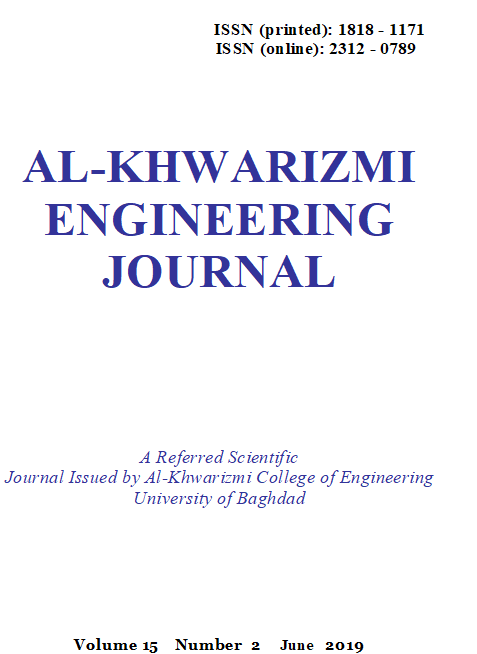Study of Transverse and Longitudinal Crack Propagation in Human Bone Using the Finite Element Method with MATLAB
DOI:
https://doi.org/10.22153/kej.2019.01.001Abstract
A finite element is a study that is capable of predicting crack initiation and simulating crack propagation of human bone. The material model is implemented in MATLAB finite element package, which allows extension to any geometry and any load configuration. The fracture mechanics parameters for transverse and longitudinal crack propagation in human bone are analyzed. A fracture toughness as well as stress and strain contour are generated and thoroughly evaluated. Discussion is given on how this knowledge needs to be extended to allow prediction of whole bone fracture from external loading to aid the design of protective systems.
Downloads
References
J.W.Melvin, "Fracture Mechanics of Bone", Journal of Biomechanical Engineering, Nov 1993.
P.D.Moyle & R.W.Bowden "Fracture of Human Femoral Bone", Journal of Biomechanical Engineering, 1984.
Thalamann NM Kang MJ, Goto T: Problems and Solutions for the Accurate 3D Functional Modeling of the Hip and Shoulder. Proc. of IEEE Computer Graphics International. 2002; [www.miralab.unige.ch/papers/135.pdf]
R.K Nalla, J.H.Kinney & R.O. Ritchie, "Mechanistic Fracture Criteria for the Failure of Human Cortical Bone", Neutral Publishing Group, 2003.
Alfio Quarteroni and Fausto Saleri, "Scientific Computing with MATLAB and Octave" Second Edition, Springer-Verlag Italia, Milano, 2006.
Jaffar AA, Abbas SJ & Abdullah HM: Stress analysis of the hip bone. Al-Khwarizmi Engineering Journal. 2005; 1:61-72.
Dr. Akram Abood Jaffar , Dr. Sadiq Jaffar Abass , Mustafa Qusay Ismae: Biomechanical Aspects of Shoulder and Hip Articulations: A Comparison of Two Ball and Socket Joints, Khwarizmi Engineering Journal. 2006; 1: 1-14.
Published
Issue
Section
License
Copyright: Open Access authors retain the copyrights of their papers, and all open access articles are distributed under the terms of the Creative Commons Attribution License, which permits unrestricted use, distribution, and reproduction in any medium, provided that the original work is properly cited. The use of general descriptive names, trade names, trademarks, and so forth in this publication, even if not specifically identified, does not imply that these names are not protected by the relevant laws and regulations. While the advice and information in this journal are believed to be true and accurate on the date of its going to press, neither the authors, the editors, nor the publisher can accept any legal responsibility for any errors or omissions that may be made. The publisher makes no warranty, express or implied, with respect to the material contained herein.
















